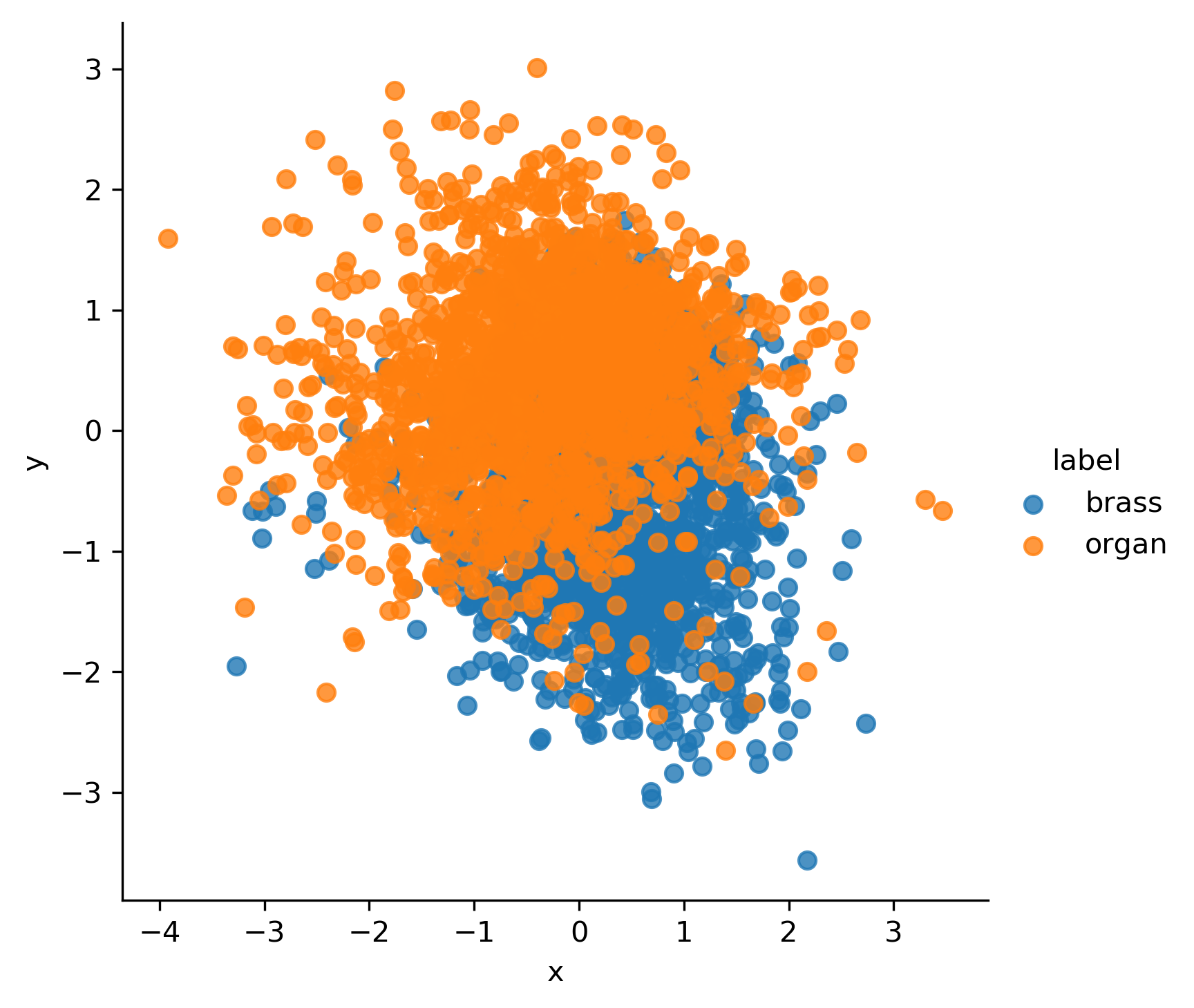This notebook demonstrates the latent space we obtained and sounds we synthesized from the network.¶
Here is an example of the 2-dimensional latent space we obtained when training on brass and organ sounds from NSynth.

Note: All the sounds are sustained sounds both when we trained and sampled from the network.
CAUTION: Some of the sounds can be loud, adjust volume accordingly!
First experiment:¶
We play examples of sounds sampled from each cluster of the latent space and we also play similar sounds from the training set to compare them.
Second experiment:¶
The network has only been trained on odd MIDI pitches and we generate samples conditioned on even MIDI pitches. (The latent space is different from the previous one but has a very similar structure)
Final note: The sampled sounds can for now be considered as of subpar quality. Those are early results which are merely a proof of concept of our network, reducing the audio frames representation to only 2 dimensions. What we want to emphasize is how smooth the interpolation between the two sounds is, and that the network produces a somewhat consistent timbre even through a continuous frequency sweeping.